Silver Moon
-
Ships in 3 to 4 weeks
Details
Description
SKU: CN.14011
Composed by Nathan Daughtrey. Band Music. Score only. Duration 7:30. Published by C. Alan Publications (CN.14011).Silver Moon is a well-crafted piece that uses percussion color as an integral component of the writing; four percussionists plus timpani and piano are fully engaged throughout the work. While the music is through-composed, several contrasting sections manipulate the themes and motives from Dvorak's beautifully poignant aria 'Song to the Moon.' The 7-1/2 minute work divides easily into 7 contrasting sections in which fragments of the aria are manipulated and transformed into several different moods.
Commissioned by the Brockport High School Band Program and directors Andy Stoker and Shawn Halquist, Silver Moon is based on themes and motives from the beautifully poignant aria 'Song to the Moon' from Dvorak's opera Rusalka. The 7-1/2 minute work divides easily into 7 contrasting sections in which fragments of the aria are manipulated and transformed into several different moods. During the introductory section, the combination of chromatic lines and trills in the flutes with wind chimes creates a very ethereal effect. A music box is emulated by the bells, vibraphone, and piano, presenting the most coherent statement of the aria melody over a drone in the low brass and woodwinds. The following section presents a new original theme with aria fragments acting as accompaniment. It builds to a climax, which clears the dissonance created in the introduction and transitions smoothly into the ensuing smooth/majestic section. The flute and oboe take turns soloing peacefully over a noodling clarinet section before the entire trumpet section takes over with a more majestic presentation of the same melodic material. Gradually, the percussion section emerges and overpowers the rest of the ensemble, which plays biting and dissonant eighth note blows leading into the following aggressive section. Driven by quick syncopated figures in the percussion, the solo alto saxophone has the opportunity to shine accompanied by the rest of the sax section and low woodwinds. The upper woodwinds take over, but quickly move into an accompanimental figure to make way for a sinister presentation of the alto sax theme in the low brass and woodwinds. As the smoke clears, quiet trills in the upper woodwinds move us into a quasi-improvisatory section. Using remnants of the themes presented in the previous aggressive statements, this free transitional section constantly shifts the listener's attention from one section of the band to another when the timpani suddenly (and bombastically) accelerates into and new tempo and mood. With a steady woodblock and frenetic bongos and toms, the horns and clarinets present a rather slow-moving statement of an aria fragment as a mini-fugue ensues. The trumpets and alto saxophones present their statement next, followed by the upper woodwinds, leading into the finale of the work. In the finale, several of the aria fragments heard throughout the work come together to form a majestically resolute ending lead by the brass and percussion.
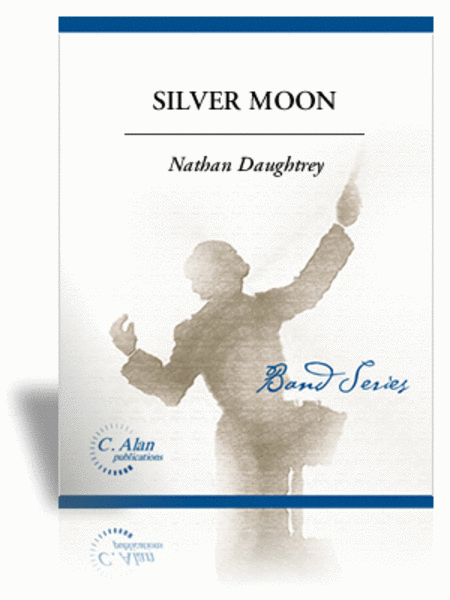
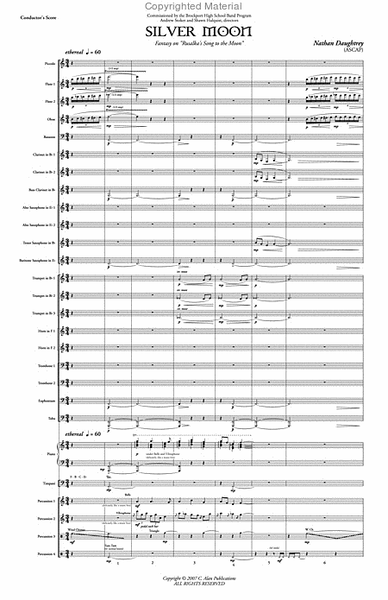
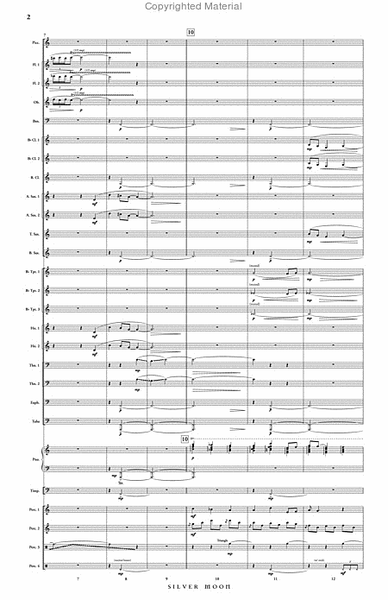
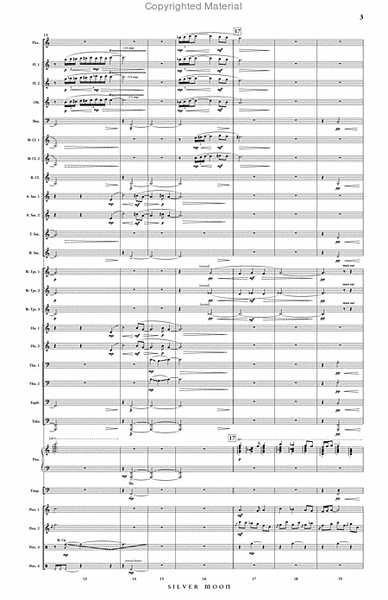
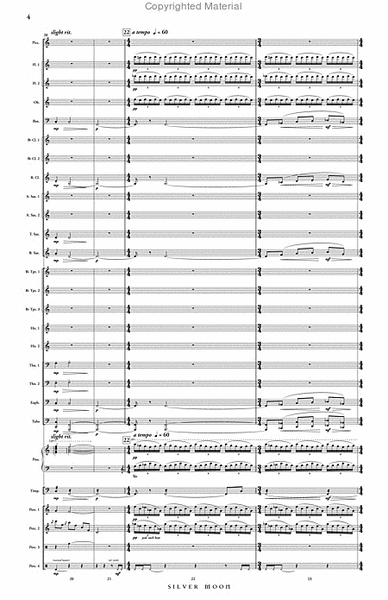
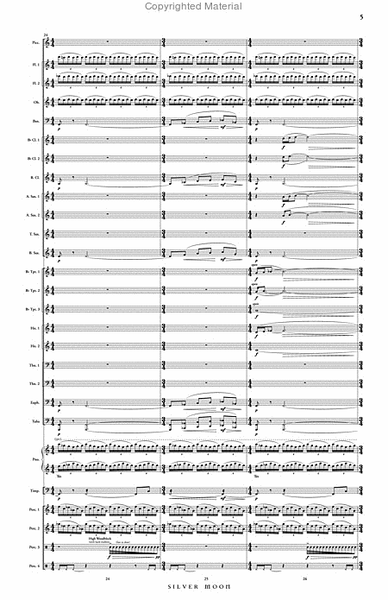
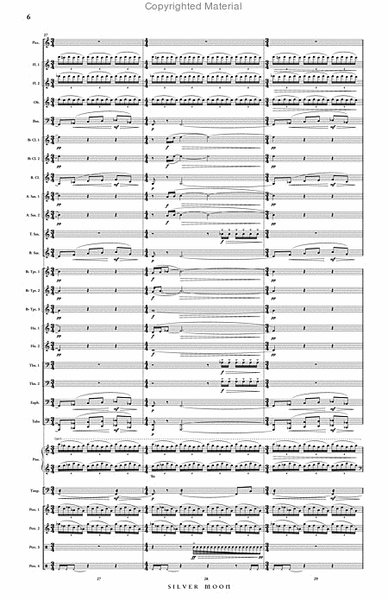
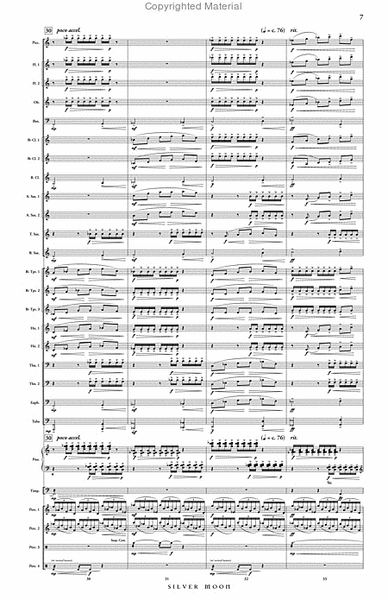
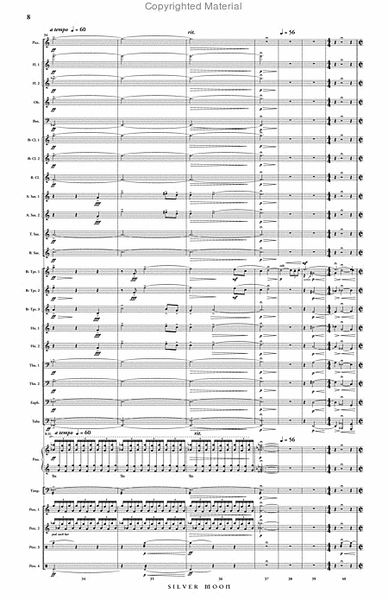
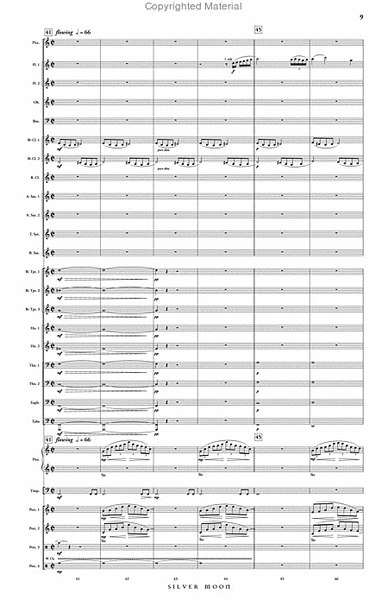
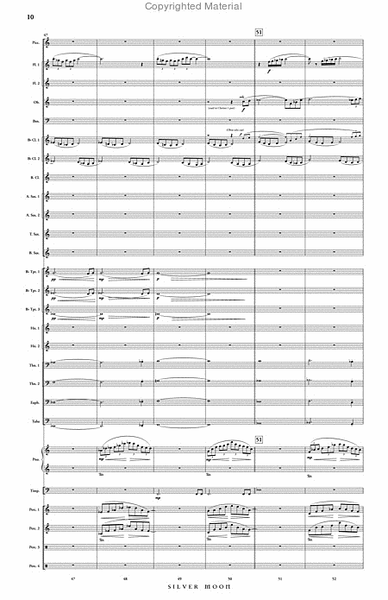
 Share
Share